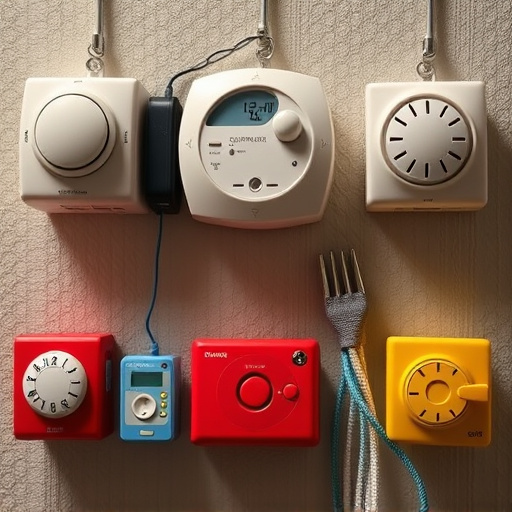Mobile panic button alarms offer powerful personal safety features, emitting a distinct Panic Alarm Sound heard up to 500 meters away (in some models) for swift assistance. Equipped with GPS tracking, automatic fall detection, and long battery life, these tools provide peace of mind for solo travelers and individuals living alone. The panic alarm sound carry distance is influenced by decibel level, environment, weather, physical design, terrain, and background noise, highlighting the importance of selecting devices with a loud, distinct sound and adequate range to reach help even in remote areas.
“Discover the life-saving power of mobile panic button alarm systems, a revolutionary tool for personal safety. This comprehensive guide explores the intricate world of these emergency devices, from their core functionality to essential features and benefits. We delve into how the Panic Alarm Sound acts as a powerful deterrent, while also examining factors influencing its carry distance. Learn best practices for implementing these systems effectively, ensuring peace of mind in today’s world.”
- Understanding Mobile Panic Button Alarm Systems
- Key Features and Benefits of Panic Alarm Sound
- Factors Affecting Carry Distance of Panic Alarms
- Best Practices for Implementing Mobile Panic Button Systems
Understanding Mobile Panic Button Alarm Systems
Mobile panic button alarm systems are compact, portable devices designed to provide immediate assistance in emergency situations. When activated, these systems emit a loud and distinct Panic Alarm Sound that can be heard up to a certain Carry Distance, alerting nearby individuals or emergency services. The carry distance varies across models, with some offering ranges of up to 500 meters, ensuring that help can be summoned swiftly from even the most remote locations.
These devices are often equipped with various features like GPS tracking, automatic fall detection, and long battery life, making them reliable companions for individuals who prioritize personal safety. Whether used by solo travelers, outdoor enthusiasts, or those living alone, mobile panic button alarm systems offer peace of mind, knowing that assistance is just a press away.
Key Features and Benefits of Panic Alarm Sound
Panic alarm sound systems are designed to attract immediate attention and ensure swift response in emergencies, making them a crucial safety feature for individuals and organizations alike. The key feature that sets these alarms apart is their distinct and powerful sound carry distance. This long-range capability ensures the alarm’s signal reaches not just nearby ears but also those far away, facilitating quicker intervention.
Benefits extend beyond its audible warning. A well-designed panic alarm sound can communicate different emergency types through unique tones or patterns, allowing listeners to gauge the severity and location of the crisis. This feature is particularly beneficial in large spaces like malls or office buildings where clear communication is essential for orderly evacuation. Additionally, many modern systems incorporate strobe lights or vibration alerts to cater to users with auditory impairments, enhancing overall accessibility and safety measures.
Factors Affecting Carry Distance of Panic Alarms
The carry distance of a panic alarm sound is influenced by several key factors. One primary consideration is the decibel level of the alarm itself—higher-decibel alarms are more likely to travel farther, effectively alerting people in closer proximity and potentially even those at some distance. Additionally, the environment plays a crucial role; open spaces allow sound to travel further than enclosed areas where acoustics can dampen or distort the alarm’s reach. Weather conditions, particularly wind and rain, can also affect how far the panic alarm’s sound propagates, potentially reducing its effectiveness in outdoor settings.
Another factor is the physical design of the alarm device—compact, lightweight models may produce a powerful sound but might not have the same range as larger, more robust devices. The terrain or surface on which the alarm is activated can also impact its carry distance; rough ground or uneven surfaces may cause the sound to reflect and bounce in unexpected ways, potentially affecting its ability to reach nearby ears. Lastly, background noise levels in the environment—whether from traffic, crowds, or other ambient sounds—can mask or diminish the effectiveness of a panic alarm’s sound at greater distances.
Best Practices for Implementing Mobile Panic Button Systems
When implementing mobile panic button systems, several best practices can ensure their effectiveness and usability. First, choosing a device with a loud and distinct Panic Alarm Sound is crucial. The sound should be easily recognizable and audible even in noisy environments or from a distance. This feature ensures that users can alert others quickly during emergencies.
Additionally, considering the Carry Distance of the mobile panic button is essential. Devices should be designed to emit signals over a reasonable range, allowing users to trigger assistance even when they are out of direct sight or communication range. This capability is particularly vital for individuals who frequently travel alone in remote areas or have limited mobility.
Mobile panic button alarm systems offer a critical safety net, leveraging technology to enhance personal security. By understanding key features like panic alarm sound intensity and factors impacting carry distance, users can maximize their effectiveness. Best practices for implementation ensure these systems are readily accessible and reliable, providing peace of mind in an increasingly digital world. Incorporating mobile panic buttons into daily routines could prove invaluable, especially when navigating unfamiliar or potentially dangerous environments.
